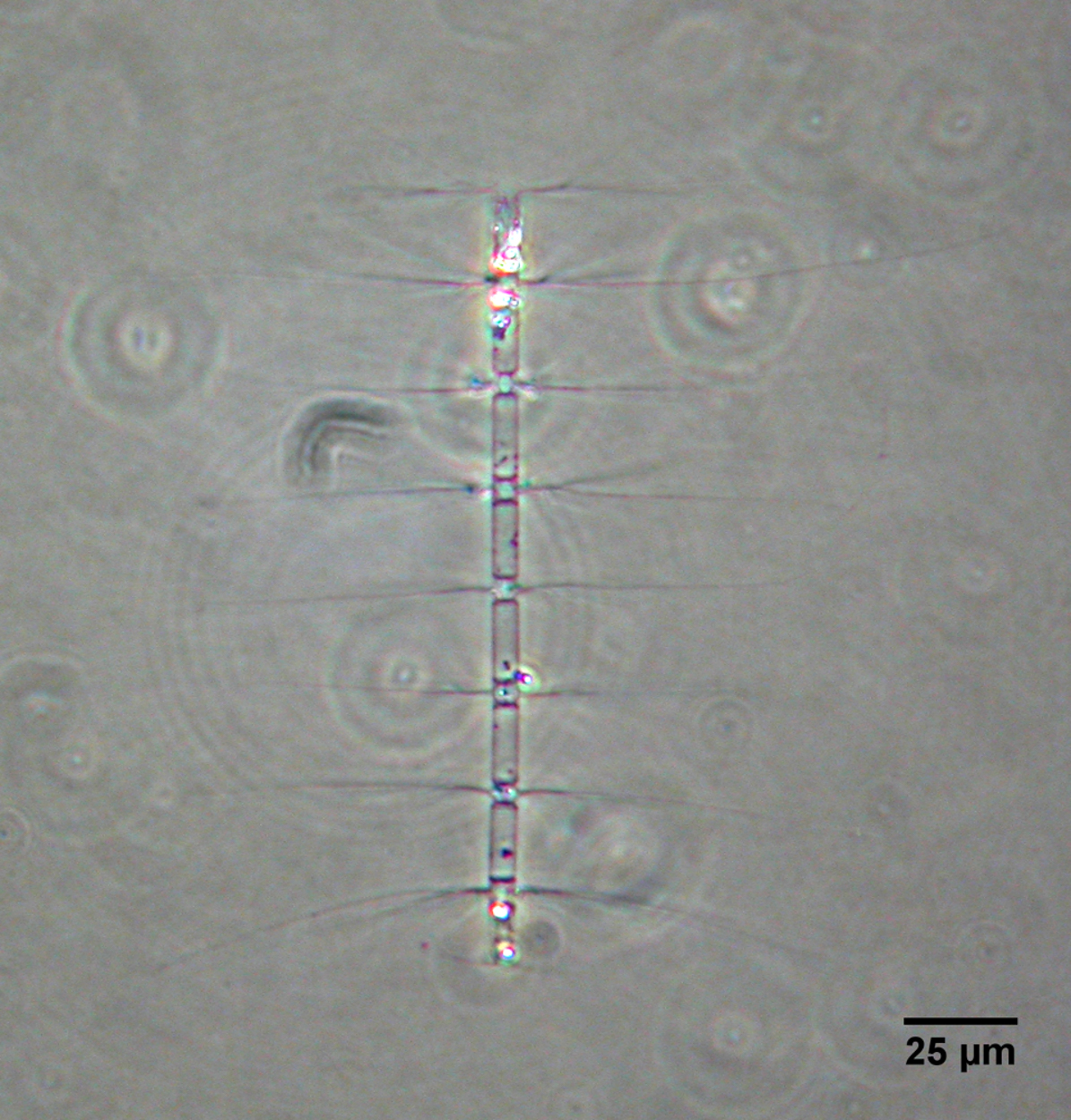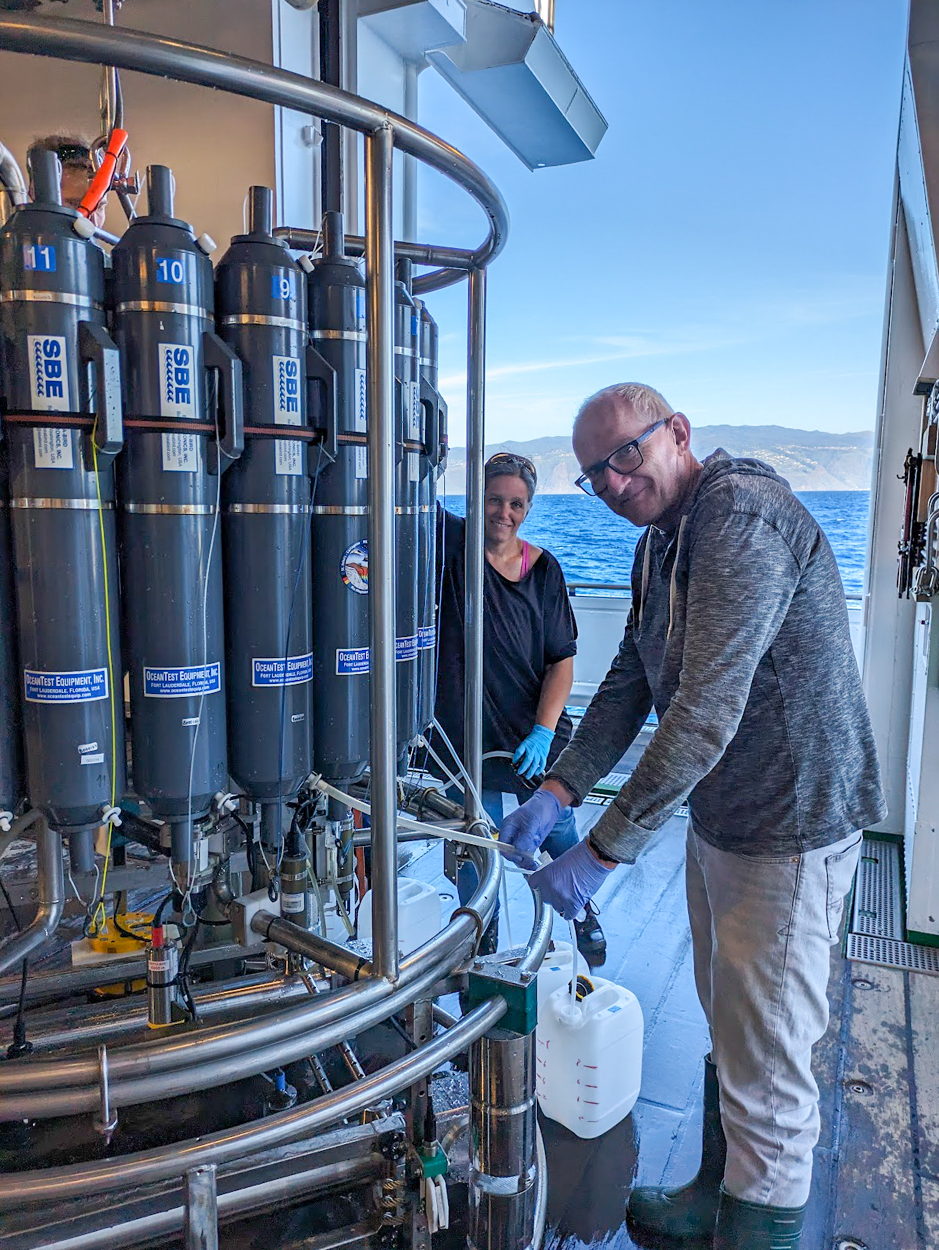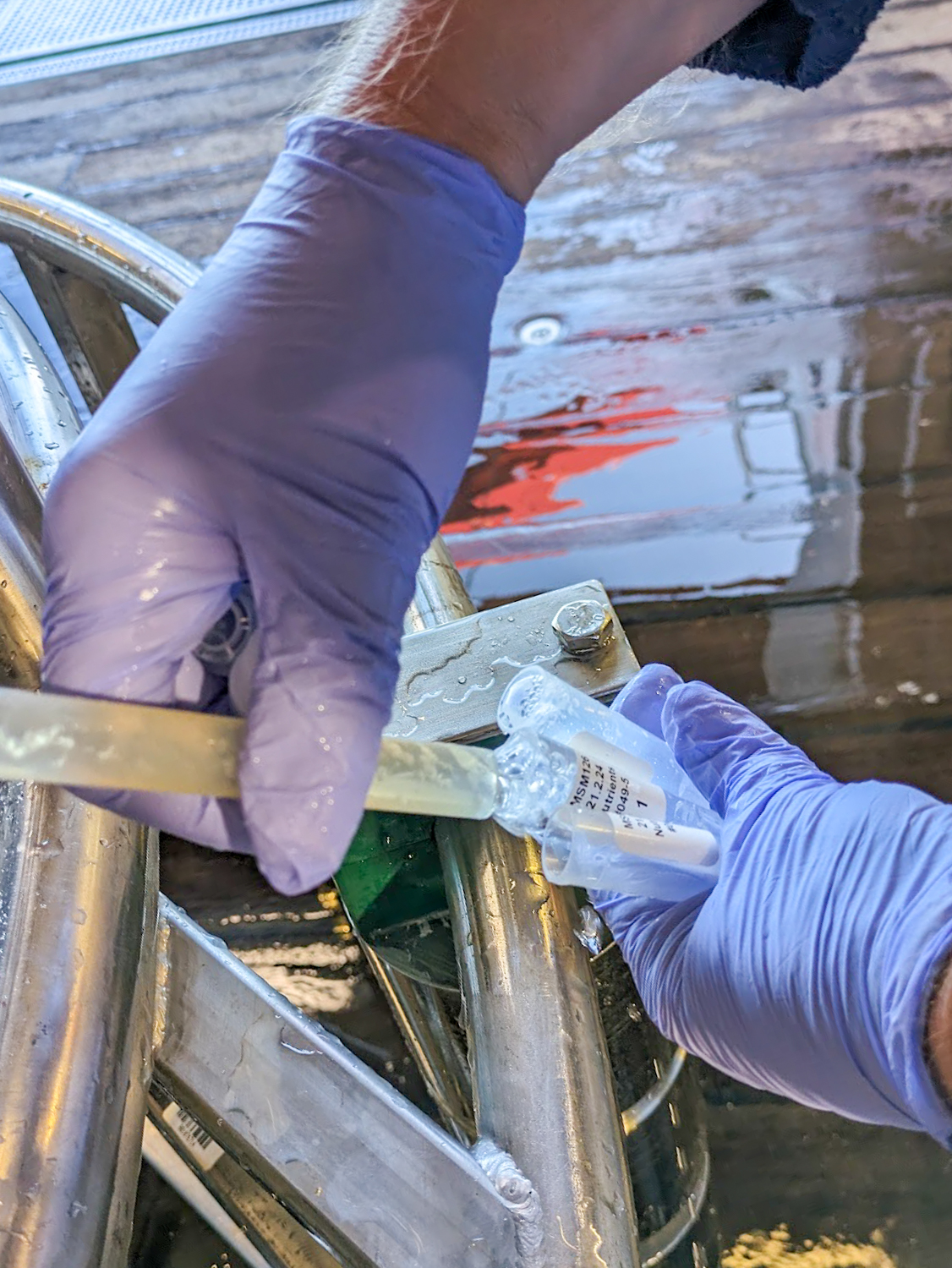Exciting plankton creatures have been making their way into the laboratories on board RV Merian since we left Funchal almost two weeks ago. Several scientists and engineers from German, Portuguese and US institutions set up shop in the chemistry, dry and deck labs on the main deck to prepare for plankton sampling and analysis. Since then, the main deck has been a buzzing bazaar of plankton critters, with specimens being hand-picked with tweezers and pipettes from water samples and plankton nets, concentrated in petri dishes and beakers, and swapped between planktologists as needed.
We get up, put on our working gear and get ready for the first CTD deployment at one of the six target stations, the deep plateau area on the western flank off Madeira with a maximum depth of 1500 m. We are off to sample seawater from different depths and the organisms in it with 24 Niskin bottles attached to the CTD.
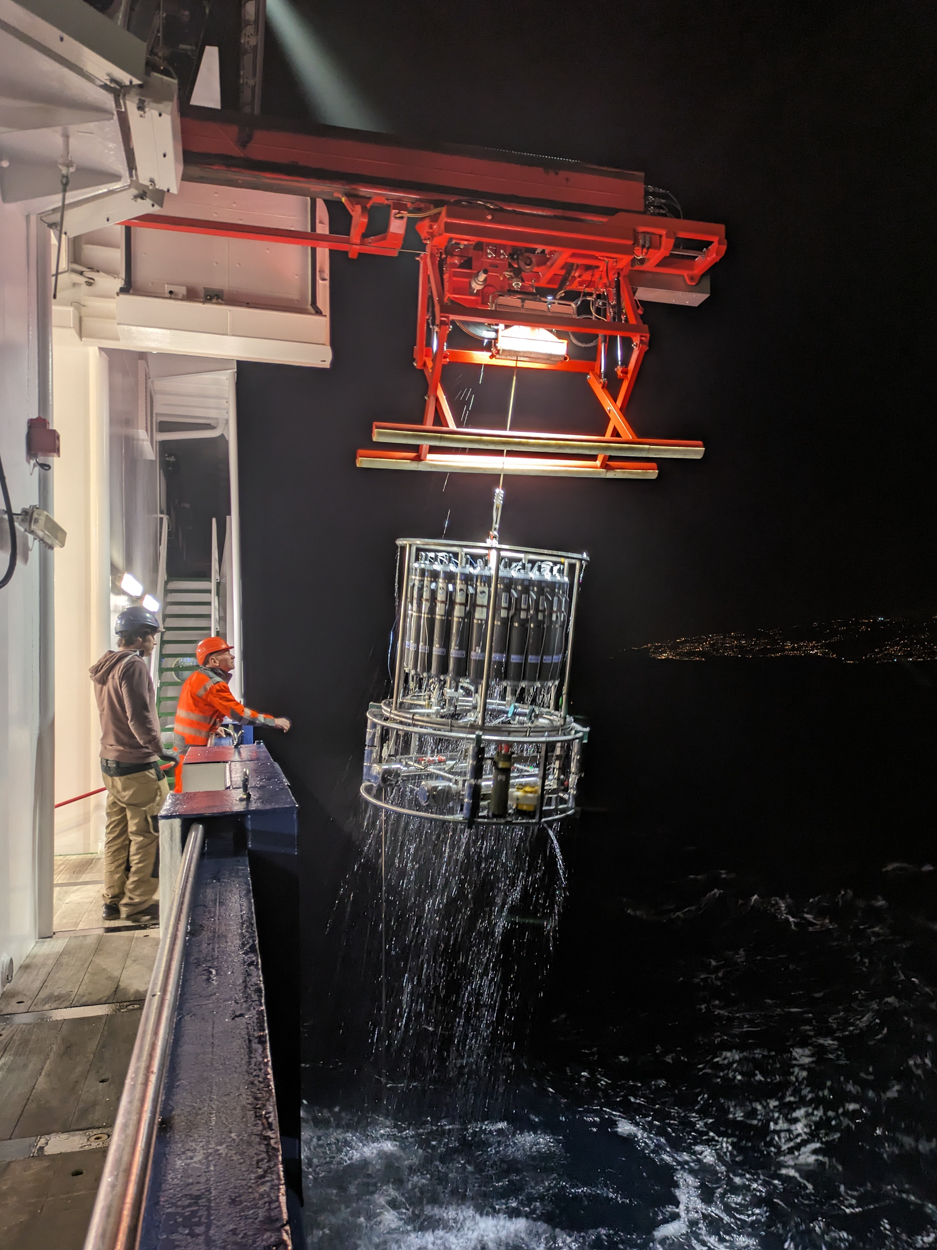
The focus is on the smallest creatures in the plankton, from bacteria and phytoplankton (microscopic unicellular algae) to their zooplankton predators. Bacteria and unicellular algae form the base of marine food webs and serve as optimal prey for grazers in the plankton. But: Who eats whom, where and when? Do water temperature, light, salinity and nutrients matter? Are prey species and prey quality equally important? These are the questions we are trying to answer, especially in the light of an ongoing heat wave in the Northeast Atlantic. The aim is to analyse the seasonality and productivity patterns of plankton, from bacteria and phytoplankton at the base of the food web to higher trophic levels such as larval fish and jellyfish.
Since we left the port of Funchal, we first concentrated on the water column in the Ridge area in the East between Madeira and Ilhas Desertas. Here the phytoplankton biomass was evenly distributed in the upper water column, where water temperatures were constant at around 20°C down to 200 m. Below this, light is reduced to a minimum and phytoplankton production declines. This is where the juicy unicellular phytoplankton and bacteria turn into marine snow particles that sink and decompose on their way to the depths. Here, the critters of the deep take over, relying on the snowflakes, the leftovers from the richly set table above in the water column.
Now, in the plateau area on the westernmost flank of Madeira, CTD profiles show that phytoplankton is scarce in the upper surface layer, but accumulates in a distinct layer at around 100m depth. This is where the production takes place and the grazers are invited to feast.
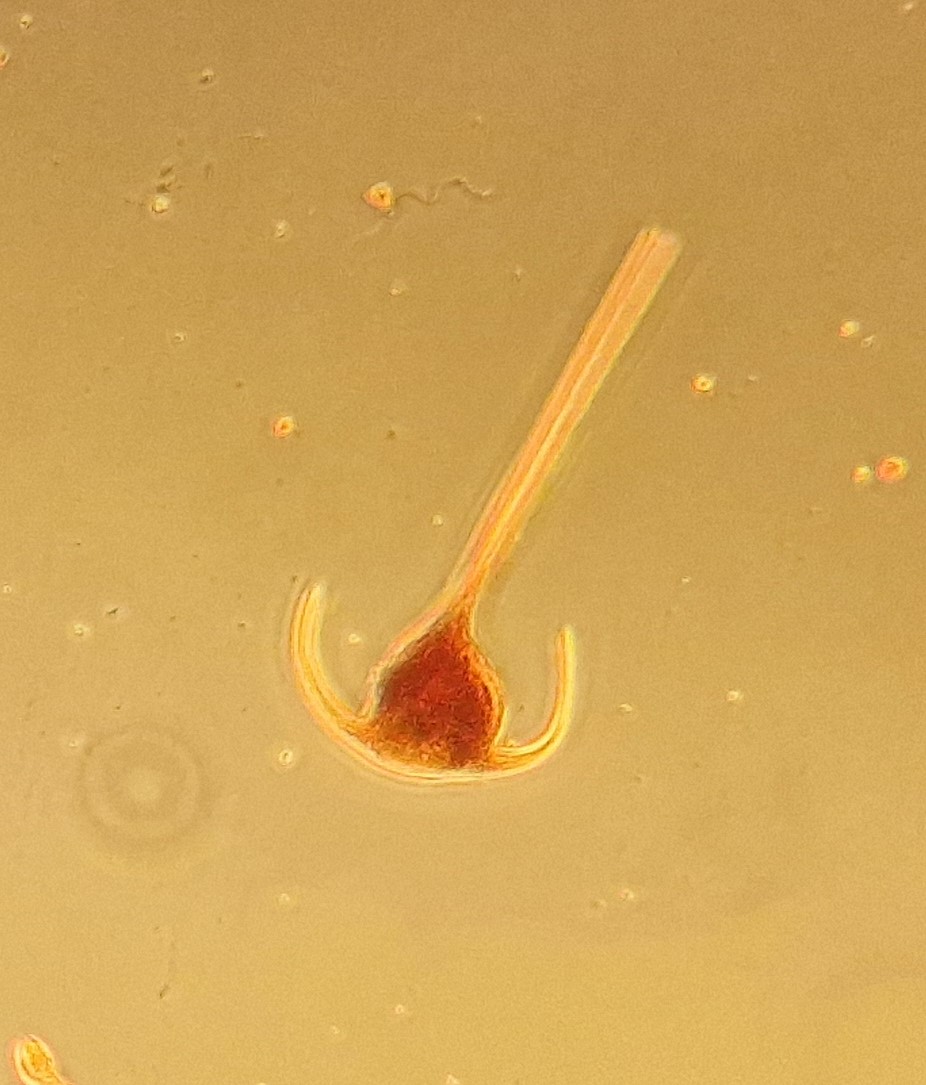
Dinoflagellate Tripos sp. 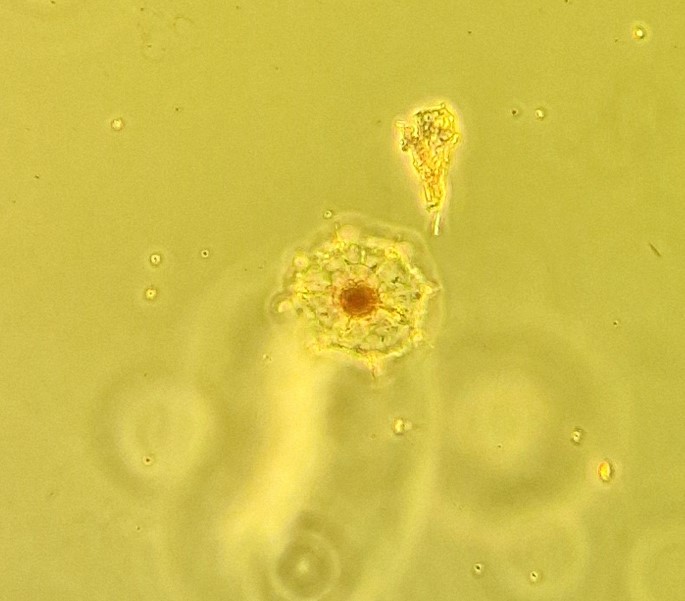
Radiolaria (Spumellaria) 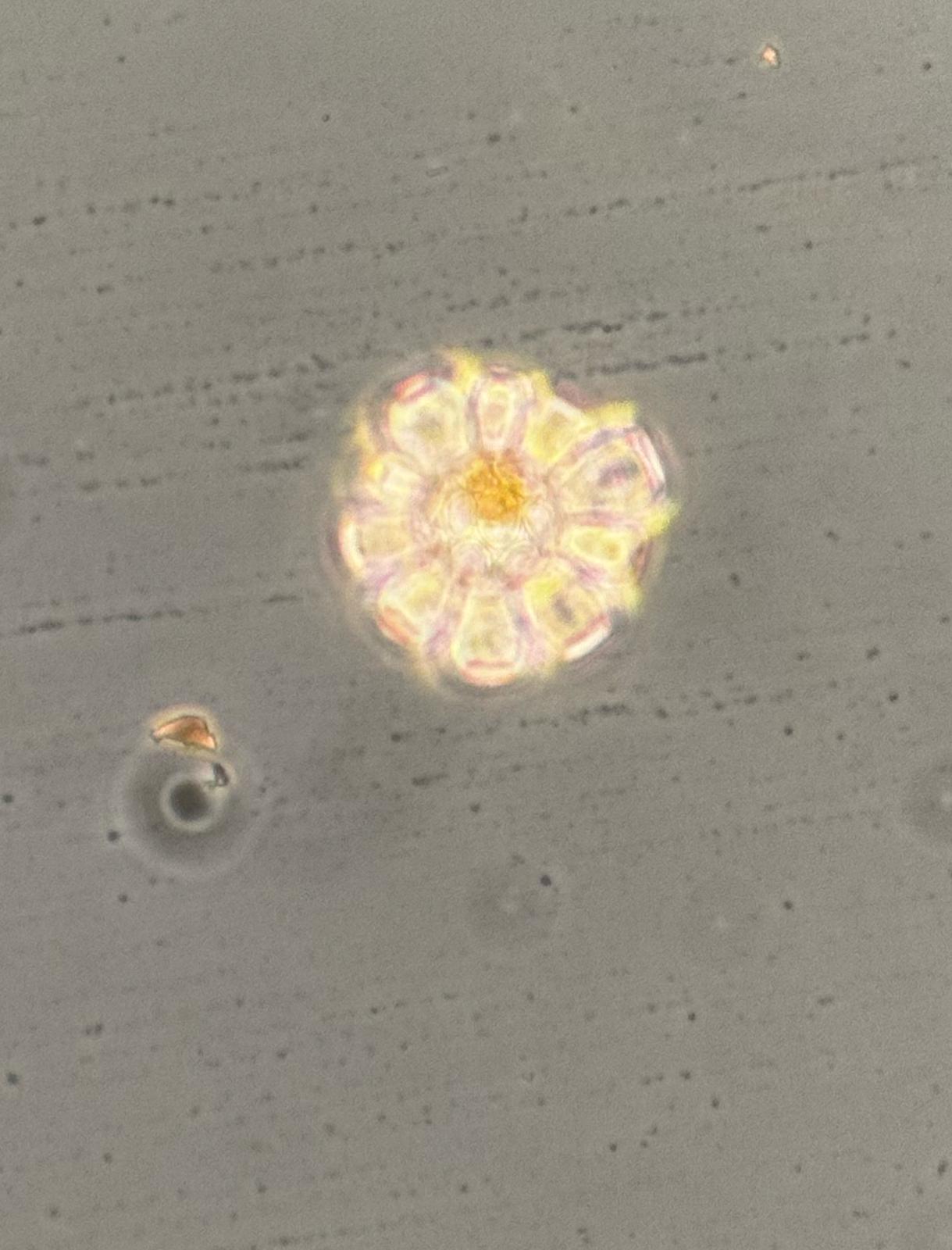
Coccolithophore Scyphosphaera apsteinii 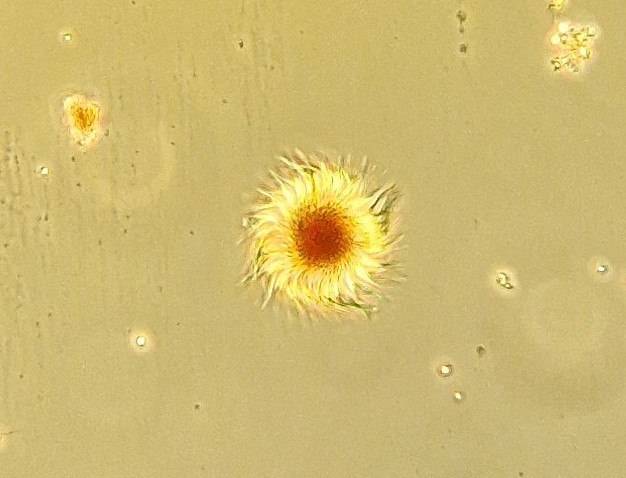
Ciliate (Strobiliidae)
The CTD with Niskin bottles comes back to the surface after a deep dive to 1500 m. Now the sampling circus starts to cover the scientists’ needs for seawater from different depths to cover all the necessary parameters, from salinity, dissolved oxygen and nutrient measurements to bacteria, phytoplankton and microzooplankton analyses. While some parameters can only be analysed in the laboratories of the home institutions, some analyses, such as microscopic counts and identification of phytoplankton and microzooplankton, are carried out in the field. This gives us an immediate insight into the structure of the plankton communities off Madeira, challenging and delighting us with the overwhelming biodiversity that subtropical plankton has to offer. While the phytoplankton in these waters is usually dominated by small unicellular fractions (< 20 µm), a nice variety of larger diatoms seems to thrive at this time of year. Their predatory counterparts, the microzooplankton, further enrich the biodiversity and provide insights into the wide variety of forms and functions at the base of the food web. The micrograzer fraction consists mainly of ciliates, dinoflagellates, radiolarians and copepod nauplii, which serve as optimal food for larger grazers within the food web.
We now look forward to the remaining sampling during cruise MSM126, and are already looking forward to the upcoming laboratory and data analyses based on the amazing sample set that we are collecting during this cruise.
Greetings from on board RV MARIA S. MERIAN,
Nicole Aberle-Malzahn and Manfred Kaufmann
